|
Equipping a rig to be a permanent or even part-time home takes some doing. You want to get the things you’ll need and use while avoiding luxury items that will just take up space and not get used. We’ve made our fair share of both types of purchases. And, in the process, we’ve learned some key items make life on the road that much better. In addition to these six must-have RV gadgets, here’s a countdown of our top 12 RV-related purchases. Please note: As an Amazon associate, we may earn from qualifying purchases. 12. Long-Handled Cleaning Brush Since our trailer stands 13 feet, 3 inches tall, cleaning bugs off the front can be a challenging endeavor. But the DocaPole 5-12 Foot Scrub Brush Extension Pole simplifies the job. Just as the title describes, the pole can span any distance between 5 and 12 feet to make it easy to reach the lower and higher portions of the trailer. We also bought the pruning saw attachment, for those instances when we need to move low-hanging branches out of our way, and the squeegee attachment to help us clean the windows. 11. Kitchen Sink Strainers  We didn’t know we needed these, but we quickly learned to appreciate their importance. The Fengbao 2-piece Kitchen Sink Strainer saves our gray tank from filling with food particles that cause odors. The tight stainless steel mesh even keeps coffee grounds from going down the drain. 10. Dish Organizer The Camco Stack-a-Plate has come in quite handy. The two sizes keep our dinner and dessert plates safe and secure during travel. And, our bowls fit right on top of the dessert plates and stay just as safe. We never have to worry about our dishes breaking between destinations. 9. Fridge Fan  The battery-powered Camco Fridge Airator keeps air circulating in our RV fridge to keep food cool. This is especially helpful when we find ourselves in warm weather. As long as we remember to check the battery power, we’re in good shape. 8. Cabinet Shelves Our pantry cabinet includes three levels of 23-inch deep storage area. Rather than wasting a lot of space, we purchased some mDesign metal storage shelves that allow us to better organize our canned and dry goods. We put one shelf in the back of each level and two shelves on the bottom level. Then we added mDesign plastic storage bins on the lowest level to store our spices. 7. Cellphone Booster  Since we need reliable internet everywhere we go in order for me to work, we purchased a weBoost Drive X RV Cell Phone Signal Booster and have been very pleased with it. When we find internet service is a bit spotty, Bob climbs the ladder at the rear of our trailer and attaches the directional antenna to it, and that usually fixes the issue. 6. Cast Iron Skillet We use our Lodge Pre-Seasoned Cast Iron Skillet with a heat-resistant holder every day and love it. And, because we employ the Alton Brown cast iron cleaning method with oil and salt, we save water in the process. 5. Electric Bikes Our Ancheer Folding Electric Bikes are one of our favorite purchases. We got them with the intent of having a vehicle to explore tough-to-get-into spots before getting our rig stuck in a precarious situation. They’re great for zipping around a campground or RV park, and they fold up nice and compact to fit in the back of the cab of our truck for transport. 4. Solar Panels For those times when we don’t have electric hookups, our four Renogy 160-watt solar panels come in quite handy to charge our batteries and provide the electricity we need for everyday living. This includes running our TV, computers, lights, chargers, etc. — but not our microwave. 3. Portable, Rechargeable Fan  This little OPOLAR 8-inch, four-speed fan is a powerhouse and has made a huge difference in the trailer, especially on warm nights with no hookups. Its compact size makes it extremely portable, and its clamp makes it adaptable to almost any situation. When it runs out of power, we just plug it in to charge it. Depending on the speed used, a full charge can last all night. 2. RV Backup Camera We’ve come to rely on our Furrion Vision Wireless RV Backup Camera maybe more than we should. Because our truck/trailer combo stretches roughly 65 feet, we mainly use this camera to tell when it’s safe to move in front of another vehicle when changing lanes. It’s helpful for backing up the trailer too. We also purchased two side cameras, but we hardly use those at all. 1. Lithium Iron Batteries Our two Renogy 12-volt lithium iron batteries were by far our best buy. Most RVs come with lead acid batteries, which need to be charged after expending 50% of the stored energy. Lithium iron batteries, on the other hand, can be run down empty before needing to be recharged, giving you much more energy at half the size and weight of lead acid batteries.
4 Comments
Living full time on the road requires a number of things: a spirit of adventure, confidence in one’s driving ability, and an affinity for travel. But the most important element is flexibility. Here are three reasons why: Plans Change Six months before we started full-time RV living, we had planned our first two months of stops. Having been stationary to that point, we had no idea what constituted ideal travel distance for a day. Nor did we know I would lose my job, the keeping of which necessitated moving only on weekends. The biggest variable we didn’t account for was COVID-19, which closed a lot of campgrounds. We ended up hitting the road earlier than originally anticipated. Two weeks before leaving, we canceled most of the campground stops we had booked. And we quickly learned some lessons that required flexibility. Having that flexible attitude allowed us to enjoy our daily circumstances despite the changes and upsets that came with them. Things Break If you’ve been following our journey, you know we broke our fifth wheel on the very first leg of our grand adventure. The cosmetic damage ended up breaking our pride more than anything else. Bob fashioned a weather-proof fix that we continue to live with because, although we tried to get replacement parts while near Elkhart, Indiana, that didn’t pan out. We’ve decided to live with the constant reminder of our error and get it fixed this winter. More recently, we encountered railroad tracks preceded by a sign that read, “Rough Crossing.” If you come across a sign like that, believe it. There’s a reason these warnings are not a common occurrence. Well, we didn’t slow down as much as we should have and lived to regret it. After arriving at our destination and opening our closet, we discovered the upper closet rod had bounced out of its secure position, dropping all of the clothes it held on top of those hanging on the lower closet rod. The additional weight put pressure on the closet doors. We couldn’t even open one of them. We were able to remove all of the fallen clothes from the closet, but one end of the rod holder had broken off. That meant we couldn’t rehang the clothes until finding a fix. Bob secured the holder in place with a nut and bolt and put the rod back in position, and we rehung the clothes. Fearing it would only be a matter of time before a similar incident occurred, we rigged a support to secure both 4-foot closet rods. Not only will this prevent a recurrence of what we experienced, but it will also keep the two rods from sagging under the weight of the clothes they hold. Other things have broken too. And those events always require flexibility as we may have to alter plans and make a trip to a hardware store in order to fix something.
Weather Shifts One of the most significant things requiring a flexible attitude is the weather. We learned the importance of this before ever hitting the road when a fellow RVer delayed his trip by a day to allow a storm to pass at his next destination. Keeping an eye on the weather is paramount as a full-time RVer. You don’t want to pull in your slides during rain and get water (and possibly resulting damage) in your coach if you don’t have to. Neither do you want to set up in a storm if it can be avoided. If you know one day is going to be more blustery than another for travel, it’s best to move on the less windy day and not take a chance of a gust blowing your rig off the road. To ensure success in any type of travel situation, especially RVing, it’s best to take a bit of advice from Frank Waturi in “Joe vs. the Volcano” and “get yourself into a flexible frame or else you are no place.” 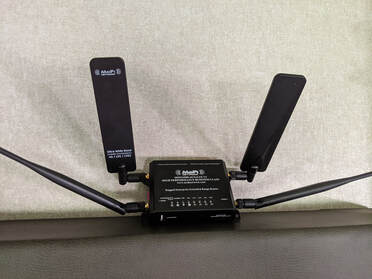 We planned our RV lifestyle around me working full time. Although that’s not currently happening, I have been doing some contract work. To successfully complete and submit any work requires reliable internet service — no matter where we are in the U.S. So, how do we ensure that necessity? Through a combination of technologies. Let me explain. One of the ways we connect to the internet is through our cellular network. For us, that’s Verizon. We can use our phones as mobile hotspots when needed. Just as our cellphones can access the internet anywhere we have Verizon service, they can transmit that same service to other devices nearby, such as our laptops. Some full-time RVers have personal Wi-Fi devices or hotspots from multiple cellular carriers rather than just one. That way, travelers can get the best internet coverage no matter their location. For example, we have a Verizon Jetpack MiFi device and a T-Mobile Mofi hotspot device we purchased from a third-party company called Millenicom. While moochdocking at my cousin’s farm in southwestern Michigan, we found the Mofi device worked better than its Verizon counterpart. In our current location elsewhere in Michigan, the Verizon device performs more effectively. Both of our devices offer unlimited data. Some cellular providers, however, throttle hotspot service when you hit a certain threshold of use, which results in super slow internet. We acquired the unlimited Verizon device shortly before the company ceased offering that feature. You can do some digging to find other unlimited options, such as the one from Millenicom. Mooch-networking Sometimes we can hop on our camping host’s Wi-Fi network, whether that be a moochdocking location or a paid campground. In either case, we get the stability and strength of the host’s Wi-Fi. In situations with spotty Wi-Fi from a host, we can transform our router into a repeater. That means the router grabs the host’s Wi-Fi signal and rebroadcasts it inside our trailer. Why don’t we just capture the host’s signal directly from our phones? Because the router has a much wider range than our phones to pull in the Wi-Fi. 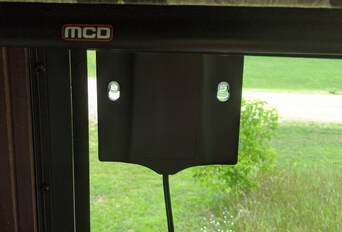 Boosting the Signal To ensure stable internet with our Verizon and T-Mobile solutions, we use the Wilson Signal Booster Reach Extreme RV Kit. An external antenna captures cell service from all providers in the area and sends that service to a booster unit. Then, an internal antenna rebroadcasts that cell signal throughout our trailer. The only caveat is that the hotspot or mobile phone has to be within 10 feet of the internal antenna in order to access the boosted signal. Another booster we use is a MIMO antenna. This one assumes your mobile hotspot has external antenna ports. Our Verizon one has those ports, but our Millenicom one does not. This booster plugs into your mobile hotspot device and sticks to a window to amplify the cellular signal. Up in the Air Still another option RVers use to deal with online matters is satellite internet. This requires a satellite internet antenna to capture the signal and a satellite modem to transmit the captured signal to your rig. Antenna options include offerings from MobilSat, Winegard, iNetVu, and AVL. We’re eagerly awaiting the release of Elon Musk’s SpaceX Starlink satellite broadband internet, which promises fast internet access from anywhere in the world for a reasonable price. Relying on 12,000 satellites in a row in low-earth orbit, the technology is expected to be available in the U.S. and Canada later this year. And, it’s targeted for nearly worldwide availability in 2021. As our time comes to a close at my cousin’s apple farm in southwestern Michigan, I find myself reflecting on the peaceful, relaxing experience we’ve enjoyed. After dashing across western America, we’ve been able to slow down to a calmer pace of life. A farm environment has a lot to offer to those not responsible for the heavy workload involved. We’ve eaten fresh heirloom tomatoes right off the vine, peaches and cherries from the tree, blueberries directly from the bush, and freshly picked summer squash and cucumbers. That fresh produce is only one of the many benefits we’ve reaped here. We’ve also spent quality time with family, watched the mystery of fireflies, and seen sparkling stars. Gentle breezes have cooled otherwise humid days, where the sun stays up until 10 p.m. The pitter-patter of rain has lulled us to sleep. We’ve taken daily walks in the woods and witnessed wildlife in its natural habitat. Our eyes have been opened to the inner workings of a successful farm. We learned farmers don’t get a day off during harvest time, even if it’s the Fourth of July. They work tirelessly for little pay to ensure fresh produce and dairy get to your table.
This is our first moochdocking experience and one we’ll treasure for quite some time. Did you know you can get a similar experience if you have a self-contained RV, even if you don’t have relatives who live on a farm? There are a couple of ways to do so: Boondockers Welcome Designed to leverage RV holding tank and battery or solar capacities, Boondockers Welcome caters to those who like to camp without hookups. People who have room to park RVs on their property offer to host travelers for between one and five nights. For $50 per year (at the time of this writing), campers can elect to accept the kindness of these generous hosts. You can search the Boondockers Welcome website by area and rig length to see your vast options, from driveways to expansive meadows, ranches and — you guessed it — farms. Some hosts even accommodate multiple RVs at once. And some offer hookups for a small fee. What do hosts get for their generosity? For one, they get to meet passers through. But they also gain discounts and credits they can use when traveling and boondocking themselves at other host sites. Harvest Hosts Another option to take advantage of farm-like country camping is Harvest Hosts. This organization allows you to stay not only at farms, but also at wineries, breweries, and museums. Paying the membership fee of $79 per year grants you access to stay overnight at more than 1,100 different venues. Hosts join this organization to garner business. In other words, they expect you to view and purchase their wares in exchange for a single-night stay at their place of business. Harvest Hosts encourages campers to spend a minimum of $20 per stay. So, if you would have frequented this type of business anyway, why not stay there for a more immersive experience? If you have an opportunity to take advantage of one of these camping options, we highly recommend doing so. It will give you a greater appreciation for all that goes on behind the scenes at these types of businesses. Acquiring the recreational vehicle you want is only one step of owning it. After that comes the best part: taking it out and using it. For that, it’s important to know your options. Here are three major types of RV camping: 1. Full Hookups When you think about camping in an RV, an established campground may be the destination that comes to mind. And there are plenty of good campgrounds from which to choose. But they’re not all created equal. Some include full hookups, which means you can plug into an electrical box, connect fresh water to your rig, and hook up your sewer hose. This “all-inclusive” option is sometimes referred to as “glamping,” or glamourous camping, because it provides all the normal luxuries you’re likely accustomed to. This is the type of “camping” we did when we first moved into our fifth wheel. We parked it at a mobile home/RV park with all the bells and whistles, which provided the perfect setting for us to move our belongings into our new home, get used to it, and fix up a few things. It’s also the type of camping we did in Sioux Falls, South Dakota, which freed us to spend more time with my parents, who were about a 10-minute drive away. Pros:
Cons:
2. Boondocking Also referred to as “dry camping,” boondocking is the opposite of glamping. This is a much more rustic option with no hookups whatsoever. That means you have to run your rig off batteries, solar panels, generators, or a combination of these sources of energy. For us, it means our microwave doesn’t work, among a few other things. And it’s definitely not glamping without a microwave. You can find boondocking options in some campgrounds, but you have many more (free) opportunities on Bureau of Land Management (BLM) land, national forests, and places like that. Some websites, such as Campendium and freecampsites.net, are dedicated to helping campers find these options. We boondocked in northern Arizona and really enjoyed being in nature, despite dust. Our site was private, remote, and refreshing — and close enough to the city when we needed supplies. We also boondocked one night at a Minnesota campground with no hookups on the Mississippi River and relished the beautiful view. Pros:
Cons:
3. Moochdocking
This is a bit of a hybrid of full hookups and boondocking. Essentially, moochdocking is camping on the property of family or friends for free. As Bob likes to explain, “It’s where we ask, ‘How big is your driveway?’” Moochdocking is what we’re doing at my cousin’s farm in Michigan. We have a sweet setup on the property with an electric hookup, access to water when we need it, and even a place to dump our black and gray water holding tanks. Not wanting to take advantage of family or wear out our welcome, however, we’re helping around the farm and keeping track of the amount of electricity we use so we can pay for it. After all, it’s hot and humid in southwestern Michigan in July, which means we’re running our air conditioner. Pros:
Cons:
What’s Our Favorite RV Camping? These three types of RV camping are not the only options. Many others combine different pieces of each. For example, you can find campgrounds that offer partial hookups, such as electricity and water but not sewer. In those cases, the campground usually has a dump station where you can empty your holding tanks before moving on to your next destination. If we had to pick a favorite type of RV camping, we’d probably say moochdocking. But we like any option that allows us to spend time with family and friends. And in some areas, boondocking or a full-hookup campground might facilitate that best. 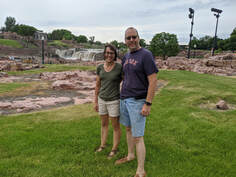 South Dakota doesn’t have the most attractive climate — unless you believe an early-period brochure in the Old Courthouse Museum in Sioux Falls that advertised a nice climate with very little snow. (If you’ve ever followed South Dakota winter weather, you know that’s far from true.) Chicago may be the windy city, but we quickly learned why South Dakota ranks as the third windiest state. We’ve been here nearly two weeks, and the unending wind is blowing us on. The whole trailer sways, the coverings over our slides rattle, and the annoyance doesn’t stop. We had one day, maybe two, when we could put out our awnings. The other days were too blustery. So, why are we making South Dakota our home? Well, most full-time RVers choose one of three states as their state of domicile: South Dakota, Texas, or Florida. If you’re on the road full time, you have to have a place of “residence” in order to register your vehicles, get driver’s licenses, etc. These three states make it relatively easy to do so and have no state income tax and low sales tax. What do the states get out of it? They benefit from income and fees they wouldn’t otherwise have, and they get more voters to boot. Attracted to Lower Fees We chose South Dakota for its lack of state income tax, low vehicle registration fees (compared to Arizona), absence of annual state vehicle inspection, low vehicle insurance rates, and low-cost driver’s licenses — which must be renewed in person every five years. In addition, the state makes it easy to take care of what could otherwise be complicated matters, such as out-of-state vehicle registration transfer. How? Through RV-friendly, third-party, mail-forwarding agencies such as DakotaPost, Americas Mailbox, and Your Best Address. Help Needed It quickly became apparent that registering our vehicles in the state would be way more arduous than we anticipated. Arizona holds the liens and, thus, titles for our vehicles. But South Dakota is a title state, meaning the title is needed in order to register a vehicle. So, we enlisted DakotaPost to request transfer of our vehicle titles, as well as to help us get both vehicles registered. And, bonus: Because we signed up for the DakotaPost mail forwarding service (a requirement to use any of its other services), we can have our South Dakota license plates forwarded to the address of our choice when they’re ready. If you are or become a full-time RVer and use DakotaPost as your mail-forwarding service, please mention that Robert and Lana Gates sent you. Family Heritage South Dakota offers other benefits to us as well. For one, we’ve been able to take advantage of a rare opportunity to spend the past two weeks playing games and interacting with my parents. They moved to Sioux Falls nearly three years ago to be part of the Union Gospel Mission, which my great-grandfather, Thomas F. Morse, started in 1900. My parents had a good run here but grew tired of the cold winters and, unfortunately for us, put their South Dakota house on the market. It’s already under contract, and they plan to leave the state in August. I still have an aunt in the area, however, and we’ve enjoyed spending time with her as well during our stop here. Did I mention this was our first time in South Dakota? Yep, and we didn’t even have time to stop to see Mount Rushmore or the Badlands on our way to Sioux Falls as we were trying to stay ahead of some storms. It’s just as well, though, because parts of the Mount Rushmore state memorial are under construction. We’ll come back when we can see the whole thing and explore the Badlands as well. We haven’t been on the road all that long yet, but we quickly discovered some items that make full-time RV life easier. Whether you’re a weekend warrior or a full-timer driving a motorhome, fifth wheel, travel trailer, truck camper, or something else, you may find the following gadgets helpful as well. I should note, as an Amazon associate, we may earn from qualifying purchases. Here are our top six must-have RV gadgets, in no particular order: 1. Tire Pressure Monitoring System (TPMS) If your rig didn’t come with a TPMS, this is an important must-have to avoid tire issues while traveling. Although Gulliver came with a TPMS, our fifth wheel did not. If we were to have an issue with one of our four trailer tires while en route, we might not even know until arriving at our destination — which might not be near a tire service center. The RV tire pressure monitoring system we purchased and installed, EEZTire TPMS, includes the ability to set alert notifications at parameters of our choosing, such as if a tire reaches a certain temperature or pressure threshold. 2. Solid Rubber Wheel Chocks Our very first camping spot on our RV journey wasn’t super level. We had prepared for such an event by purchasing what we thought were heavy-duty wheel chocks. When we detached our fifth wheel from Gulliver, however, the trailer moved and crunched one of the chocks. That didn’t give us much confidence in their ability to keep our rig, which can weigh up to 17,000 pounds, from rolling. After that, we invested in some solid rubber chocks that are so strong our trailer tires can’t run over them. They may be bulkier and take up more space in our storage compartment, but they also give us great peace of mind. You can’t put a price on that. 3. After-Market Tank Level Monitoring Kit If you only stay at campgrounds where you have full hookups, then the built-in gray, black, and fresh water tank sensors that come with your coach may suffice for your needs. But, if you plan to do any boondocking (dry camping), knowing the accurate level of your holding tanks becomes paramount. Like many other RVers, we faced the dreaded problem of our black tank always registering full, even right after we emptied it. Because we like to boondock, that proved problematic. In addition, our tank monitor dashboard only displayed levels in thirds, which didn’t provide the degree of detail we wanted. So, we invested in the Tech-Edge iSeries Tank Systems Monitor. Tech-Edge is located in Sweet Home, Oregon, only about an hour away from our family in Eugene. We took a nice drive to the manufacturing plant to pick up our kit and enjoyed a scenic lunch stop overlooking a reservoir. No, you don’t have to go to Tech-Edge in person. The company does ship its products. We just didn’t have time to wait for the shipment. Installing these monitors on your own can be challenging. You have to be able to reach an end of each tank in order to attach aluminum tape and sensors and then wire them to the monitoring dashboard. Bob called the company while installing the black tank sensor and found the staff to be extremely helpful. And, we can now gauge the actual percentage in our black tank. 4. Portable RV Surge Protector  This item can cost a pretty penny but, compared to the potential damage it protects against, it more than pays for itself. Plugging in at campgrounds comes with its own set of risks. If you get a faulty hookup, you could fry all the electronics in your coach — refrigerator, microwave, TV, etc. This gadget ensures that doesn’t happen. RV surge protectors come in various sizes and strengths, depending on your needs. We bought the Progressive Industries EMS-PT50X RV Surge Protector as we have a 50-amp rig. Not only is it surge-proof, but it’s also weather-resistant. 5. Leveling Blocks Once you arrive at your camping spot, it’s important to level your coach. This makes for a more enjoyable camping experience while moving about and sleeping in your rig but, more importantly, it protects your refrigerator. RV refrigerators are designed to be as level as possible in order to work properly. One thing that can greatly help in your quest for a level setup is a collection of Camco Leveling Blocks or Lynx Levelers. These can be stacked in pyramid format like LEGO building blocks to build a ramp and resting place for your tires. They can also be used under your rig’s leveling jacks. 6. Command Hanging Strips 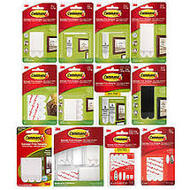 We learned about these amazing pieces of technology by 3M on YouTube. Command Strips come in various shapes, sizes, weight capacities, and colors to help you organize your coach and make it more homey. We use them to store our TV remote, organize belts, hang our shower squeegee, hold our keys, hang pictures and our all-important United States RV map on the wall, and a whole lot more. Those are our six must-have RV gadgets. What are yours? |
AuthorThis is the travel blog of full-time RVers Bob and Lana Gates and our truck, Gulliver, and fifth wheel, Tagalong. Categories
All
Archives
July 2024
|
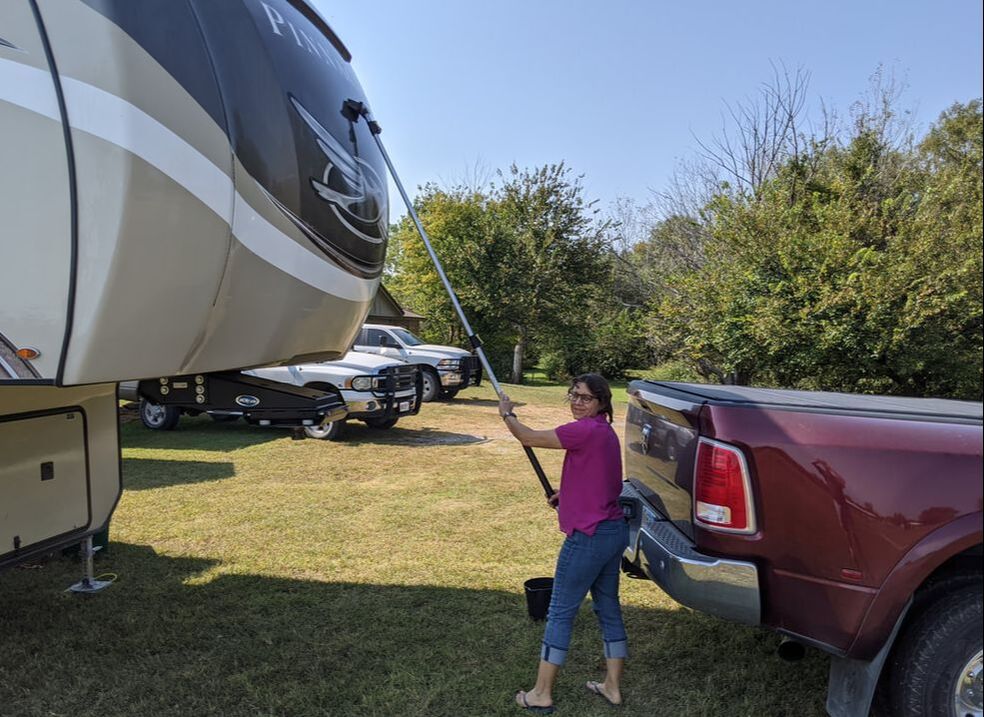
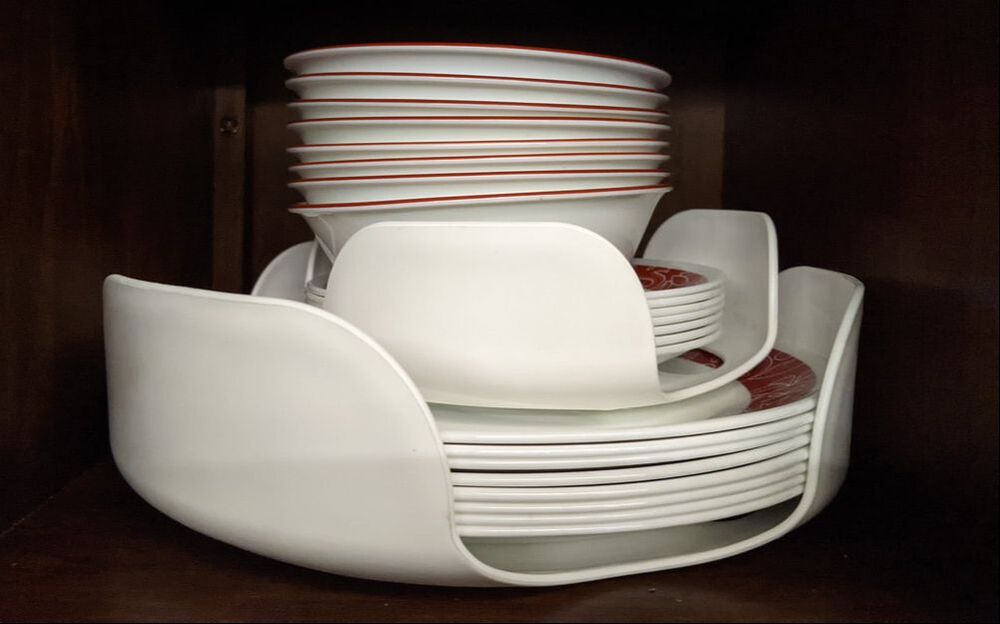
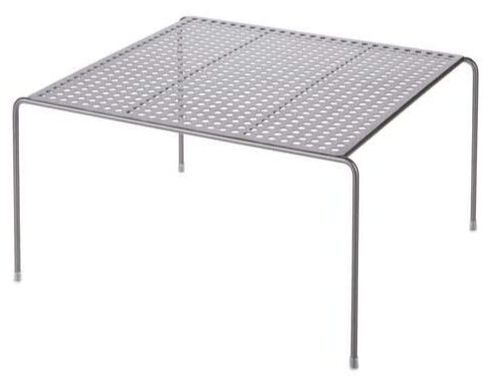
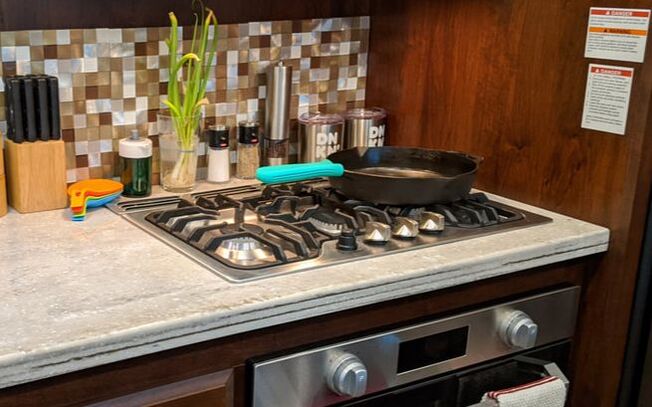
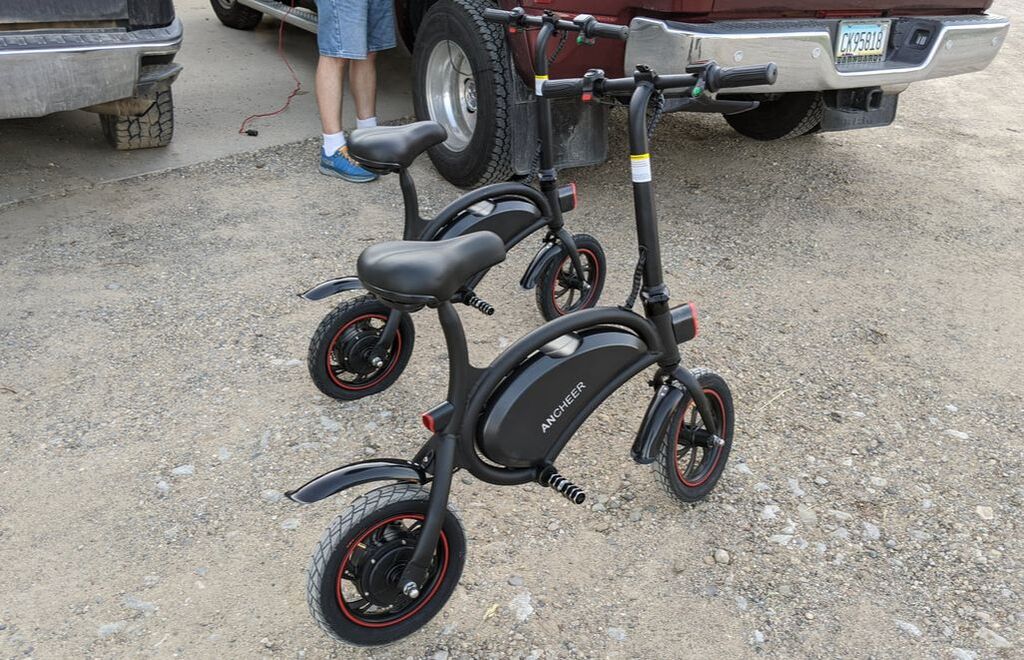
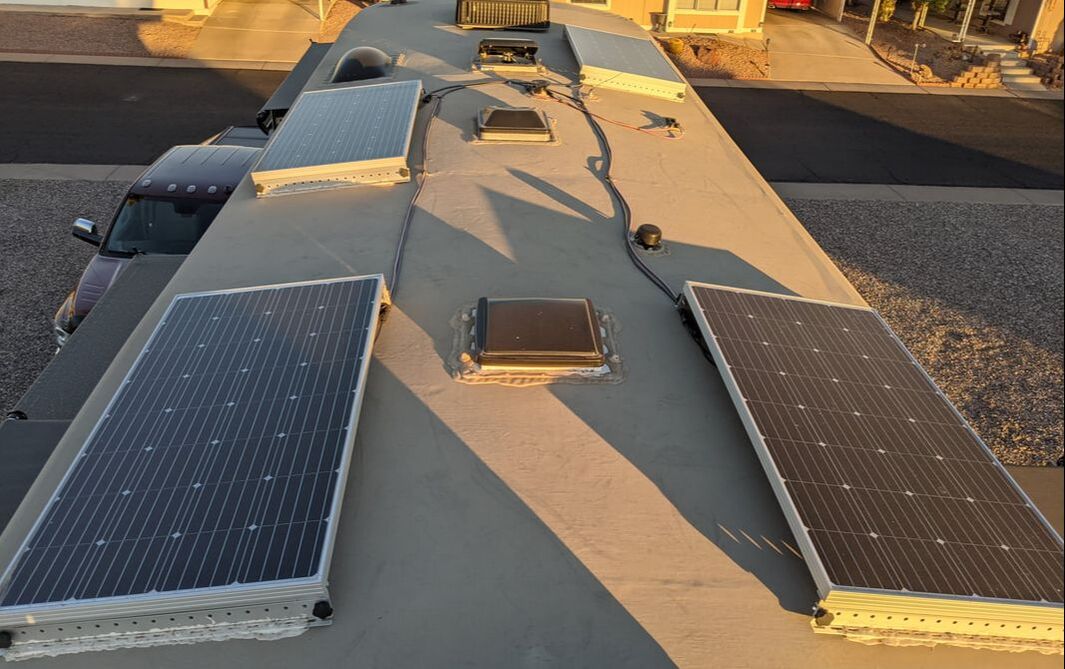
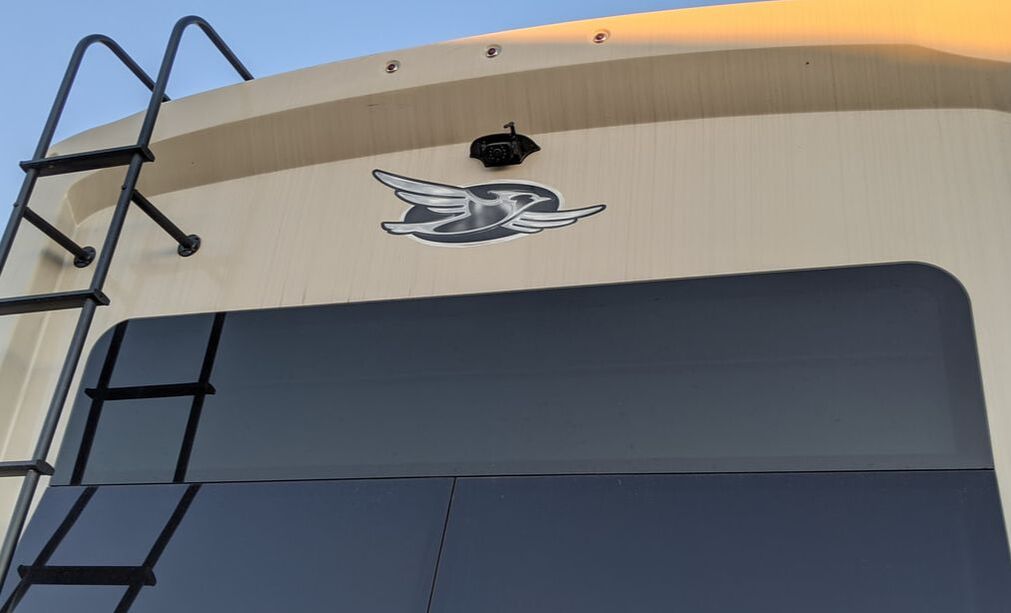
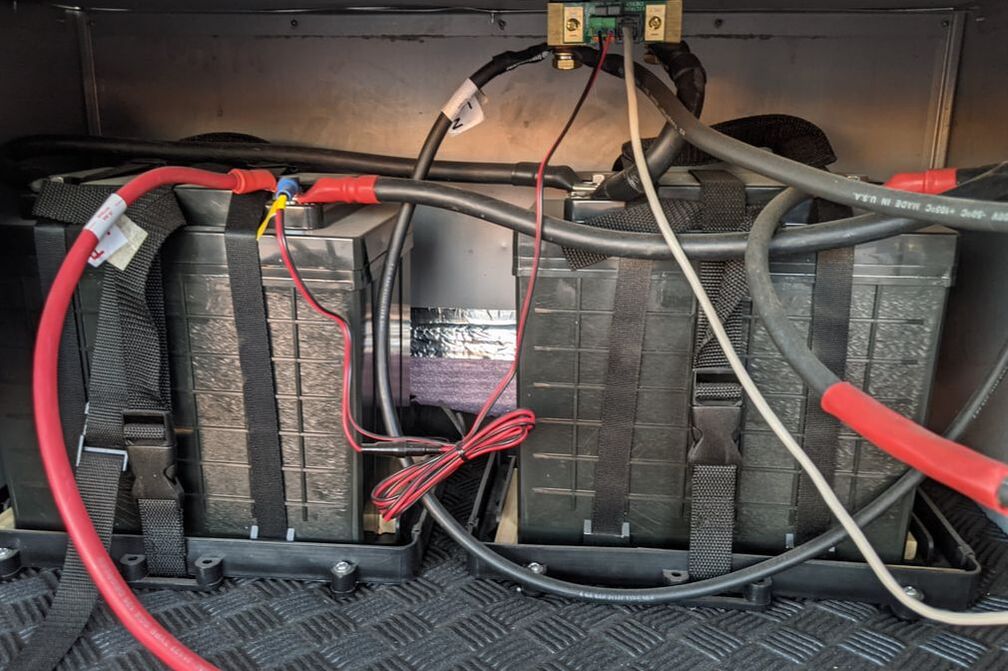

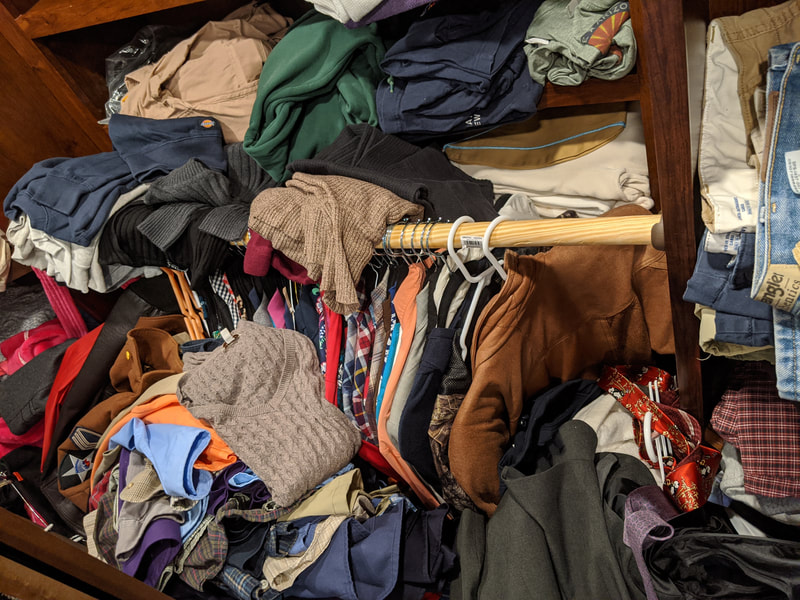
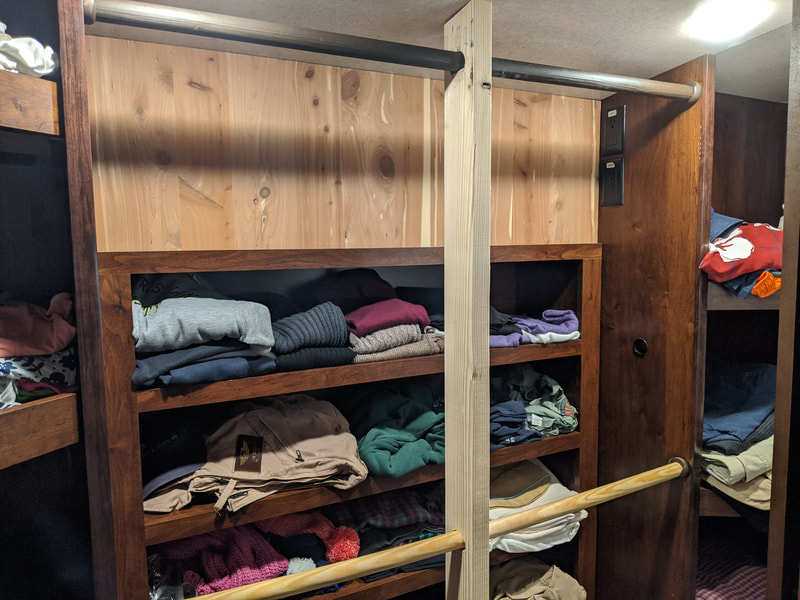
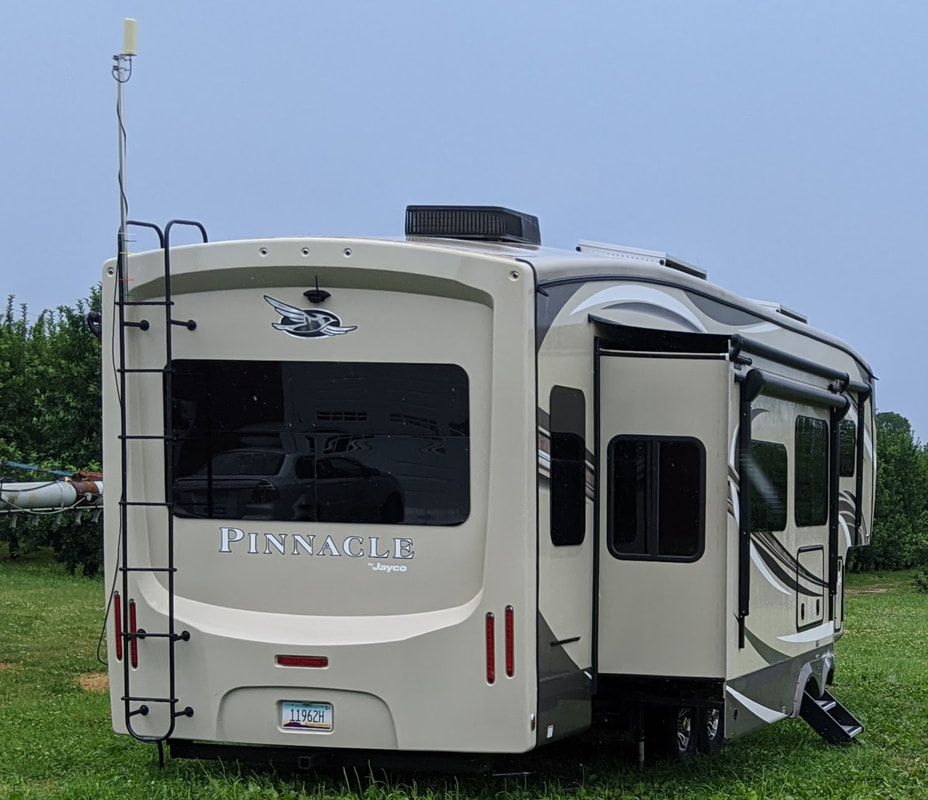



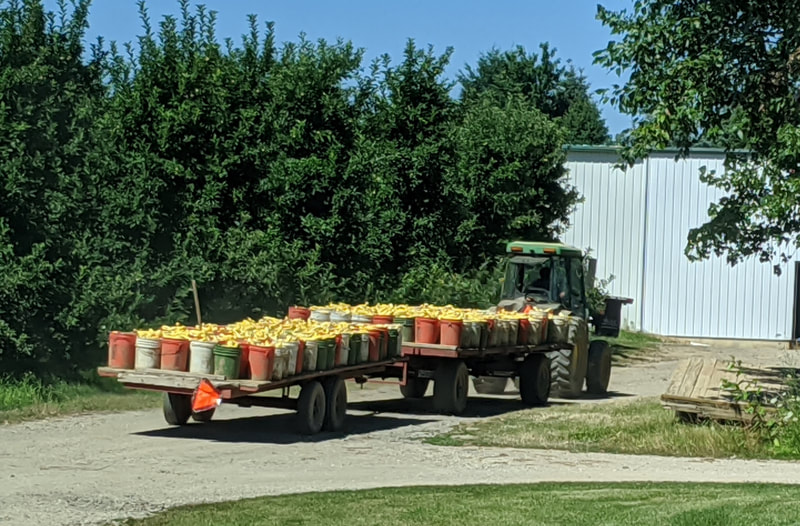
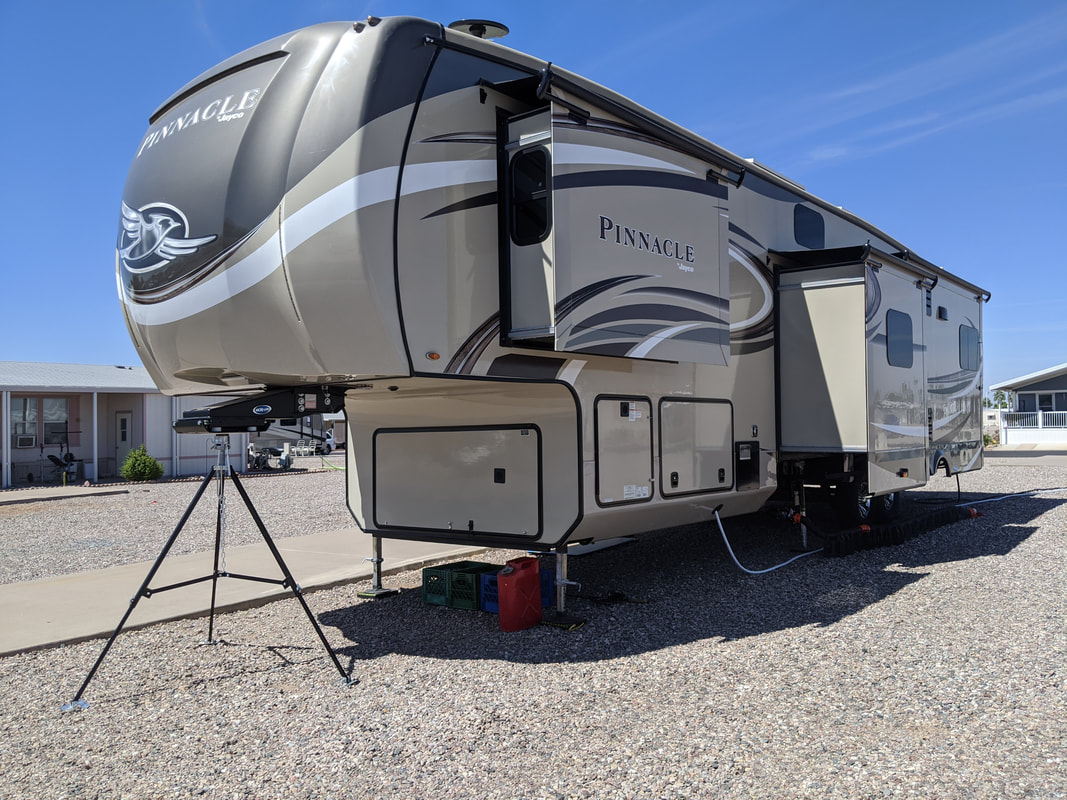
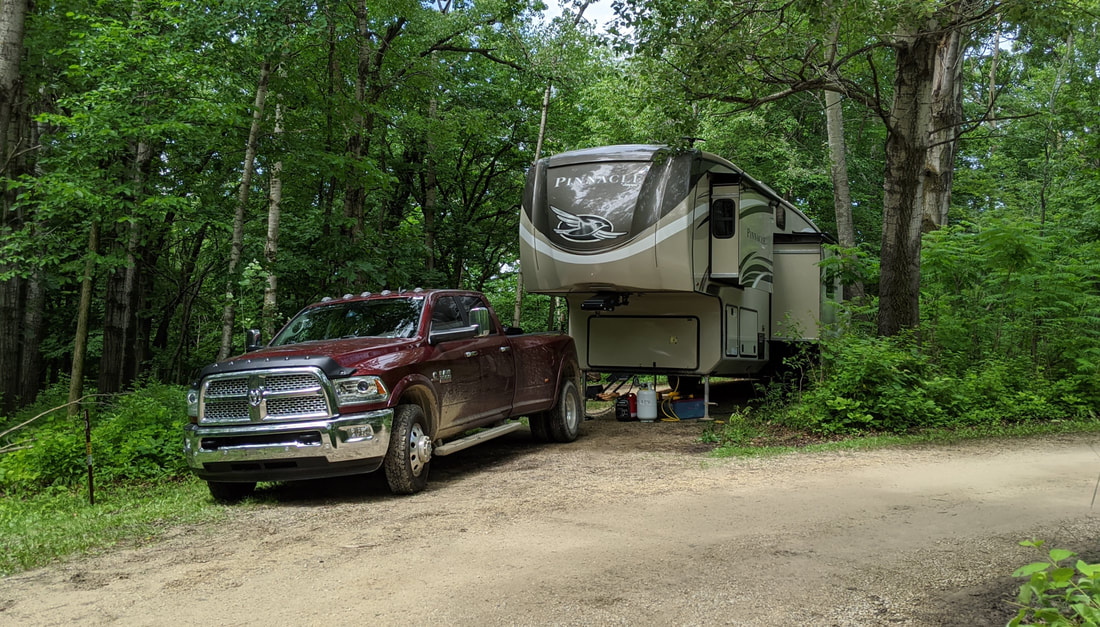
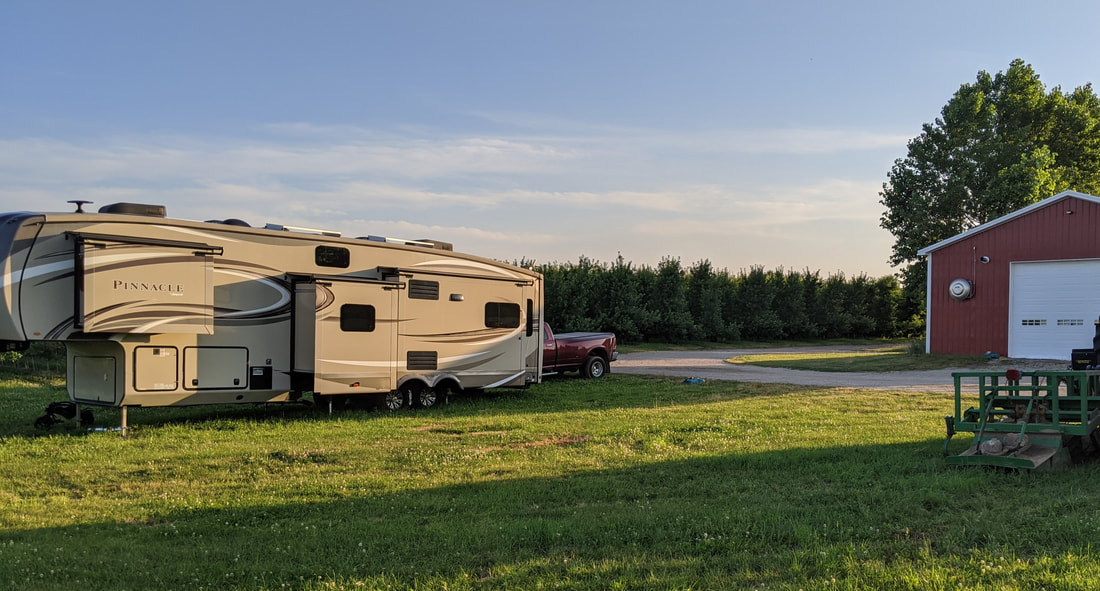

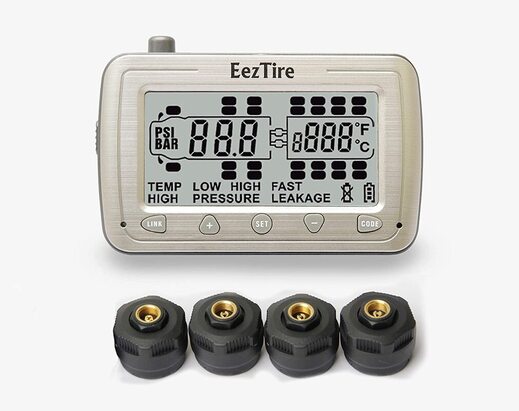
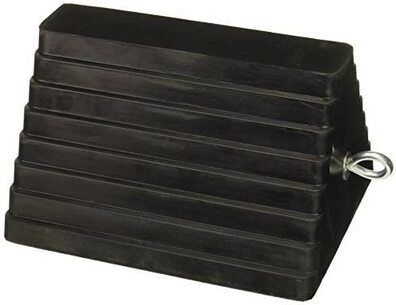
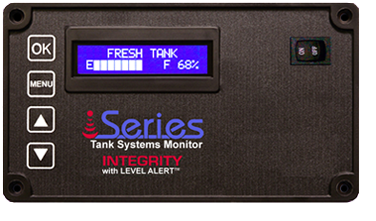
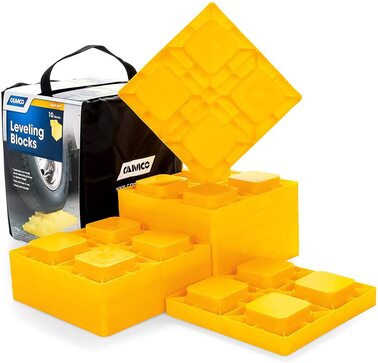
 RSS Feed
RSS Feed